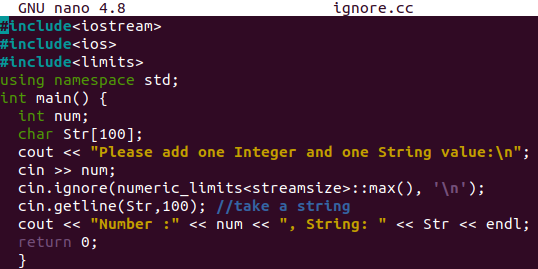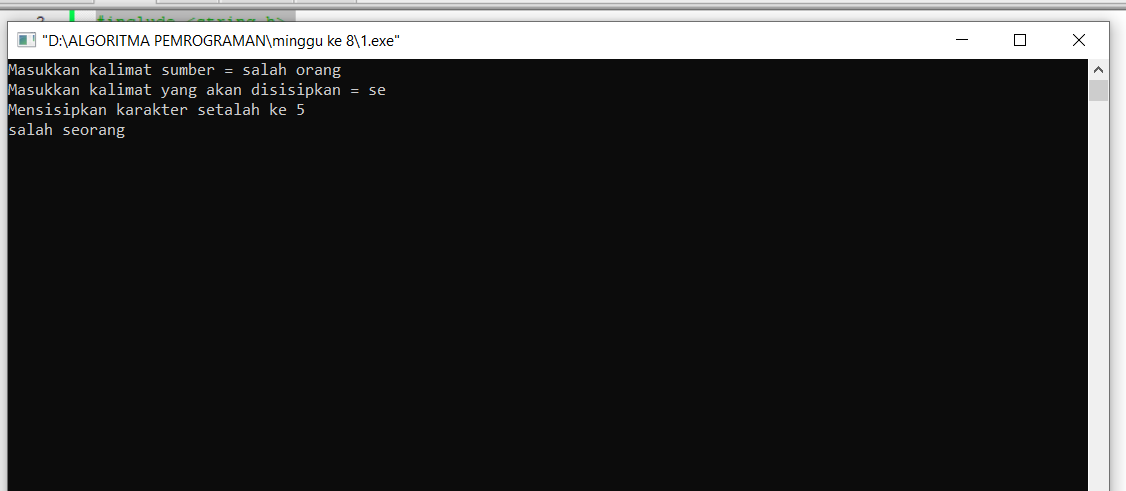

Saya punya solusi kecil ini di c ++ - mudah dapat dikonversi ke c. Jelas, Anda juga harus mengkompensasi lebar nilai, mungkin dengan membuat lebar kedalaman terbesar setidaknya selebar cetakan (representasi desimal, mungkin) dari simpul bernilai terbesar. Anda akan memasukkan spacer dummy untuk setiap simpul yang tidak memiliki orang tua cara yang lebih mudah untuk melakukan ini adalah memastikan bahwa semua daun berada pada kedalaman yang sama dengan simpul terdalam, dengan blank sebagai nilainya. Sebuah simpul kiri secara horizontal diposisikan di bagian kiri lebar induknya, sebuah simpul kanan di bagian kanan. Īngka itu memberi Anda "lebar horizontal" yang dicetak dari setiap node pada kedalaman tertentu. Jarak antar node dapat ditemukan dengan menemukan ketinggian maksimum pohon, menggunakan beberapa lebar konstan untuk node terdalam, dan menggandakan lebar untuk setiap kedalaman yang lebih rendah, sehingga lebar untuk setiap kedalaman = (1 + maxdepth - currentdepth) * deepestwidth. Mulai dari simpul akar, a pencarian pertama-lebar akan mengunjungi node dalam urutan kedalaman dan paling kiri. Jadi, Anda perlu cara, misalnya, mengatur simpul Anda dalam susunan baris, sesuai dengan kedalamannya, sesuai urutan paling kiri. Setiap baris yang dicetak terdiri dari semua node dengan kedalaman yang sama, dicetak dari node paling kiri ke node paling kanan.

(006)-.īeberapa petunjuk: spasi antara node pada kedalaman yang sama, (mis., 2 dan 4 atau 3 dan 8 dalam contoh Anda), adalah fungsi dari kedalaman. Int right = _print_t(tree->right, 0, offset + left + width, depth + 1, s) Int left = _print_t(tree->left, 1, offset, depth + 1, s) Kode: int _print_t(tnode *tree, int is_left, int offset, int depth, char s) max supported unit32 in dec, 10 digits max length of the Edge from this node to its children Rprofile = MAX(rprofile, x+((node->lablen-notleft)/2)) Ĭompute_rprofile(node->right, x+node->Edge_length+1, y+node->Edge_length+1) Void compute_rprofile(asciinode *node, int x, int y)

Lprofile = MIN(lprofile, x-((node->lablen-isleft)/2)) įor (i=1 i Edge_length & y+i left, x-node->Edge_length-1, y+node->Edge_length+1) Ĭompute_lprofile(node->right, x+node->Edge_length+1, y+node->Edge_length+1) Void compute_lprofile(asciinode *node, int x, int y) fields have been computed for this tree. It assumes that the center of the label of the root of this tree The following function fills in the lprofile array for the given tree. Copy the tree into the ascii node structre

Node->right = build_ascii_tree_recursive(t->right) Node->left = build_ascii_tree_recursive(t->left) H = MAX(node->right->height + node->Edge_length + 1, h) Īsciinode * build_ascii_tree_recursive(Tree * t) H = MAX(node->left->height + node->Edge_length + 1, h) (node->right != NULL & node->right->height = 1))&delta>4) If (node->right = NULL & node->left = NULL)įor (i=0 ileft->height & i left, 0, 0) įor (i=0 iright->height & i right, 0, 0) įor (i=0 ileft != NULL & node->left->height = 1) || * first fill in the Edge_length of node */ Void compute_Edge_lengths(asciinode *node) This function fills in the Edge_length and Void print_level(asciinode *node, int x, int level) that the node has the given x cordinate. This function prints the given level of the given tree, assuming This pic illustrates what the below routine does on canvas. The below routine prints tree in ascii for a given Tree representation which contains list of nodes, and node structure is this Here we are not going to discuss what binary trees are (please refer this, if you are looking for binary search trees), or their operations but printing them in ascii. !!! Just saved it, cause the website is down.


 0 kommentar(er)
0 kommentar(er)
